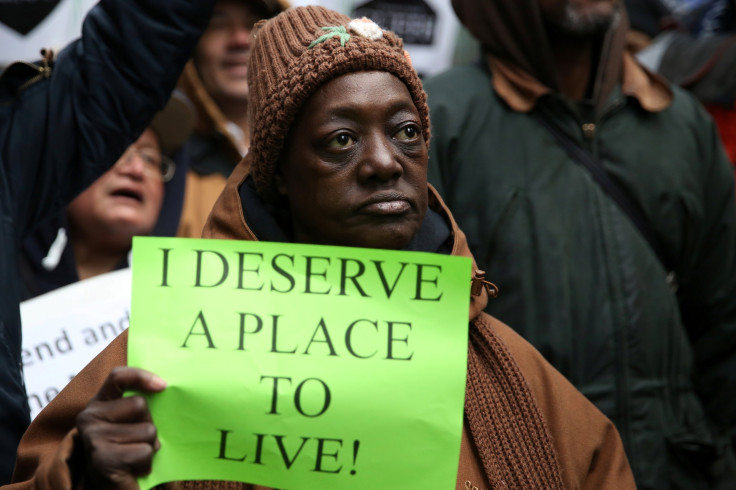Top 5 States With Homeless People In US: 23% Rise In Vagrant Population In A Year In Los Angeles, Study Says

Known as the homeless capital of the U.S., Los Angeles witnessed a surge in its vagrant population by 23 percent in a year, according to the latest annual count released Wednesday. Continuous efforts by city authorities to combat the problem have not shown any significant results. The Homeless Services Authority linked the increasing problem to economic stress on renters in the area, reports said.
"The results of this year’s homeless count are staggering. Homelessness in LA County has grown at a shocking rate. Even as work is being done to get thousands of people off the street and into housing, more and more people are becoming homeless," Los Angeles County Supervisor Janice Hahn said in a statement.
Read: How Are Los Angeles Residents Helping To Improve Homelessness In City?
Experts blamed the rising house costs and stagnant incomes as the major factors behind the rising homeless population, the Los Angeles Times reported. However, in overall U.S., homelessness has surged in various cities. According to the Wall Street Journal, from 2010 to 2015, homelessness increased by 42 percent in New York City and by 12 percent in Seattle.
Luke is a Vietnam combat veteran living on the streets of Los Angeles. https://t.co/gFmm1SXf9U
— Invisible People ➤ Imagine Everyone With a Home (@invisiblepeople) June 1, 2017
Homelessness soars 23% in Los Angeles County 30% are women. Women increased 16% https://t.co/7k7CSjEfbQ … #Homeless #LAHSA #homelesscount pic.twitter.com/FoWg0KX7bm
— Sarah Reingewirtz (@sarahimages) June 1, 2017
According to the 2016 Annual Homeless Assessment Report by the U.S. Department of Housing and Urban Development, half of the homeless population was spread across five states — California with 22 percent or 118,142 people, New York with 16 percent or 86,352 people, Florida with 6 percent or 33,559 people, Texas with 4 percent or 23,122 people, and Washington with 4 percent or 20,827 people.
In early 2016, approximately 550,000 Americans were homeless with one out of every five of them either living in New York City or Los Angeles.
According to a survey "Hunger and Homelessness" in December by the U.S. Conference of Mayors, D.C. had 124.2 homeless people for every 10,000 residents in the general population. Between 2009 and 2016, the city witnessed a rise in the population of vagrants, the Washington Post reported.
Samantha Batko, director of research for the National Alliance to End Homelessness, an advocacy group that took part in the report, said D.C. faces challenges such as large portions of its land being under federal control and lack of skyscrapers seen in other major cities.
To end family homelessness, the United States Interagency Council of Homelessness (USICH) identified four key strategies. The USICH would develop a centralized, coordinated entry system to assess needs and connect families to targeted prevention assistance where they would get temporary shelter.
The agency would provide homeless people with rapid re-housing assistance and increase their access to affordable housing facilities. USICH would also help homeless families connect with mainstream resources such as benefits, employment, and community-based services. It would also develop and build upon evidence-based practices for serving families experiencing and at risk of experiencing homelessness.
© Copyright IBTimes 2024. All rights reserved.






















